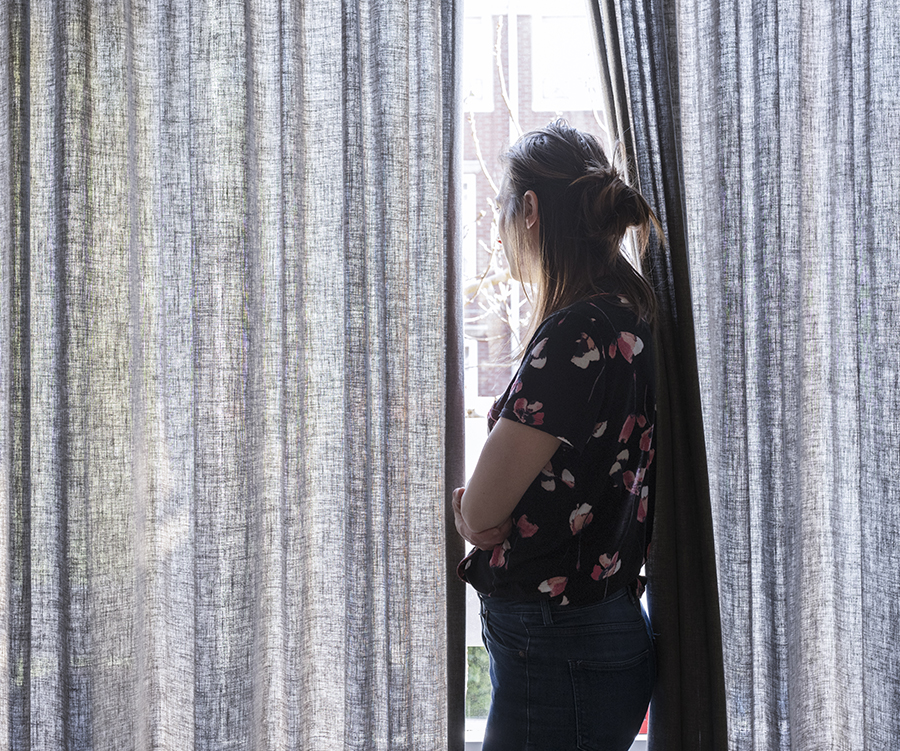A proud partner in the fight to criminalise coercive control, specialist retirement funding provider Household Capital offers responsible long-term access to home equity to meet the needs of an ageing population. Household Capital can work with you to improve your retirement lifestyle: by enhancing retirement income, providing access to capital and improving retirement housing.
Australia’s domestic violence statistics have long been cause for concern, with one study revealing an alarming 25 per cent of all Australian women having experienced emotional abuse from a current or previous cohabiting partner.
Sadly, it seems this year’s hardships have only added fuel to the flame, with national and state-wide domestic abuse hotlines seeing a surge since the onset of the COVID-19 pandemic. Findings by a Women’s Safety NSW survey have also highlighted the growing issue, showing rising rates of women experiencing domestic violence since the beginning of lockdown.
Despite the mounting statistics, Essential Research polling commissioned by White Ribbon Australia in October found that a great number of Australians remain confused about what constitutes domestic abuse.
According to the study, 47 per cent of cisgender men aged 18-34 don’t see “isolating a partner from loved ones and sources of support” as a sign of domestic violence, while 53 per cent don’t recognise “harassment or spying via electronic means” as abusive behaviour.
Despite these common perceptions, these and other non-physical forms of domestic abuse are just as serious forms of abuse as physical violence, and examples of coercive control. According to the White Ribbon Study, older Australians (aged 55+) are most familiar with the dangers of coercive control and are the most supportive of criminalising it.
With the pandemic’s aftermath estimated to last years, it’s important that we educate ourselves on the dangers of coercive control and know the warning signs to look for.
Below, three common behaviours of coercive control.
Degradation
This form of coercive control can include name-calling and general bullying behaviours such as belittling someone in front of their family and friends or finding purposeful ways to shame someone and undermine their confidence.
Perhaps one of the hardest types of coercive control to spot, degradation is often disguised behind a seemingly ‘harmless’ comment. On the contrary, it is a serious form of coercive control that aims at making a person question their own worth and judgement.
Financial control
Financial abuse is when a person uses money as a way to control or exploit their partner. If your partner is secretive about money, prevents you from accessing money or giving you allowances, that often become less and less overtime, you could be a victim. Other red flags could be when your partner forbids you to work or study, or refuses to give you access to sufficient funds.
Victims of financial abuse are often financially dependent on their partner, which makes leaving the abusive relationship feel impossible. Often victims will worry about not being able to afford rent or having their children taken away from them.
In Australia, women are two times more likely to experience financial abuse than men. This, combined with Australia’s national gender pay gap of 14 per cent, mean that women are, on average, retiring with significantly less money in their retirement fund than men.
Earlier this year, independent retirement funding provider Household Capital hosted its 2020 Third Pillar Forum where financial experts were invited to discuss the three pillars of retirement funding: the government pension, superannuation and voluntary savings.
One of the forum’s biggest conversations centred on the significant disparity between the sexes in retirement wealth, and the need for education. Dr Josh Funder, Household Capital’s CEO, addressed the need to support all older Australians, including women, to have a dignified old age.
“Many Australians, particularly single retired Australians, particularly single female retired Australians, have only one pillar and it’s the pension,” he said. “We all need to come together and agree on a range of measures to make sure Australian retirees aren’t vulnerable, poor and can live with dignity.”
Unfortunately, financial abuse disproportionally affects those over the age of 50, with stats showing people living alone or isolated are among those most susceptible.
If you think you could be victim to financial abuse, or someone you know could be, it’s important to realise that there are steps you can take to protect yourself and your money, whether you choose to stay in the relationship or to leave.
Monitoring of activities and isolation
This form of coercive control is when your partner actively discourages you from spending time or communicating with your loved ones. It may also include your partner discouraging your family and friends to reach out to you.
The danger behind this form of coercive control is that you can eventually lose your support network, and in trying times, do not have anyone to reach out to. It also means the only opinion you are listening to is that of your partner’s, which can potentially have a harmful effect on your own judgement.
Red flags include your partner wanting to move away from your family, continually talking badly about your family and friends and physically preventing you from communicating with people. Unfortunately, this year has seen a staggering number of Australians suffer from loneliness; it was the most commonly reported personal stressor due to COVID-19.
If your partner is actively spying on you, whether it’s via cameras around the home or the monitoring of text messages and emails, this is a major cause for concern.
If you recognise any of these signs within your relationship, or suspect a friend might be in trouble, please call 1800 RESPECT.
Brought to you by Household Capital.
To help us change the law, we need you. Sign our petition calling on the government to make coercive control a crime and help us change the lives of thousands of women.




